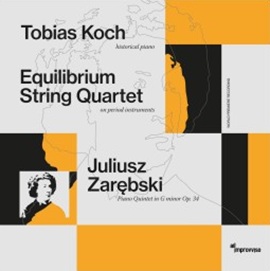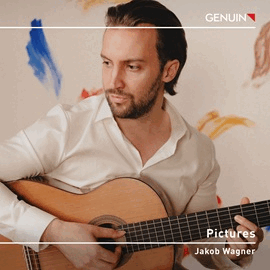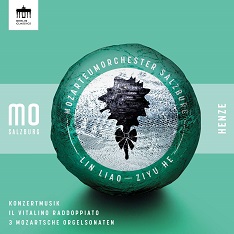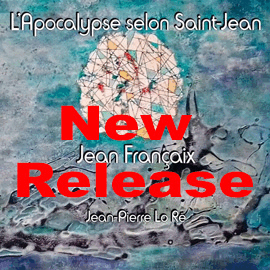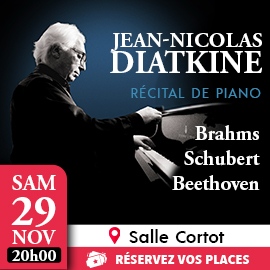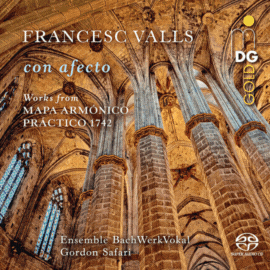Das Mozarteumorchester legt drei Werke von Hans Werner Henze aus verschiedenen Epochen seines Lebens vor. Bei dem Jugendwerk Konzertmusik für Violine solo und kleines Kammerorchester, das der noch nicht volljährige Henze für seinen Freund Kurt Stier 1943/44 komponierte, handelt es sich um ein erst jüngst wiedergefundenes Stück. In den Ecksätzen frisch und musikantisch, beseelt im Mittelsatz mit dem Duo von Violine und gedämpfter Trompete bzw. Posaune, mag man die Nähe zur Musik der 20er und 30er Jahre in Deutschland und dem Stil Hindemiths und Shostakovichs heraushören.
Il Vitalino raddoppiato, Ciacona per violino concertante ed orchestra camera für Violine und Orchester, entstand 1977 und ist Gidon Kremer gewidmet. Henze nutzte das sehr bekannte Werk, das Tomaso Antonio Vitali zugeschrieben wird, um das Prinzip der Chaconne als einer Variationsform über einem gleichbleibenden Bass mit zahlreichen weiteren Variationen zu erweitern. Henze legt dabei seine eigene Tonsprache auf das barocke Ausgangsmaterial. Am Ende steht die virtuose Kadenz der Violine, die auf einem Solostück von Henze beruht.
Nochmals fünfzehn Jahre später, 1991, schrieb Henze während einer Composer-in-Residence bei den Berliner Philharmonikern dem Scharoun Ensemble drei Mozart’sche Orgelsonaten für 14 Spieler in die Finger. Anlässlich des 200. Jubiläumsjahres von Wolfgang Amadeus Mozarts Tod kombinierte er sechs Holzbläser, sechs Streicher sowie Harfe und Gitarre. Mit der Besetzung Viola d’Amore, Oboe d’Amore und Harfe und Gitarre wollte er das Apollinische der Musik Mozarts widerspiegeln, mit tiefen Blasinstrumenten in hoher Lage, Altflöte, Bassflöte, Bassklarinette sich dem Klang der Orgel nähern.
Bei der Konzertmusik wie auch bei Il Vitalino radoppiato hat eine Solovioline schwierige Aufgaben zu übernehmen. In diesem Fall zeichnet Ziyu He für den Solopart. Der Mitzwanziger hat in seiner Jugend zahlreiche Preise gewonnen. Während man bei der Konzertmusik die Interpretation noch gutheißen kann, entgleist sie bei dem kleinen verdoppelten Vitali. Zuzugeben ist, dass man sich überlegen kann, ob man eher Vitali als Ausgangsmaterial herausstellen will und damit Barockes oder Henze, der seine Handschrift aufgetragen hat, dann kann man auch andere Schichten hörbar machen. Ich habe seit Jahrzehnten eine andere Deutung im Ohr, leider nicht mehr rekonstruierbar, mit wem, vielleicht mit Gidon Kremer. Und die stellte deutlich auf das barocke Modell ab und damit harmonischere Töne als es Ziyu He jetzt tut. Und die gefiel mir. Allein schon wegen der Frage, wie himmlisch fliegend, also schön, oder wie irdisch stampfend, also trampelnd, es klingen sollte. Dazu kommen technisch wenig ansprechende Passagen. Kurzum, so stelle ich es mir nicht vor.
Das Mozarteumorchester liefert in allen Werken saubere und gut artikulierte Interpretationen, die die Qualitäten des Ensembles zeigen. Hier gibt es nichts zu bemängeln. Vor allem die drei Orgelsonaten gelingen als kammermusikalisch durchdrungene Lesungen.
The Mozarteum Orchestra presents three works by Hans Werner Henze from different periods of his life. In the youth work Konzertmusik for solo violin and small chamber orchestra, which Henze, not yet of age, composed for his friend Henze composed for his friend Kurt Stier in 1943/44, is a work that has only recently been rediscovered. Fresh and musical in the outer movements, animated in the middle movement with the duo of violin and muted trumpet or trombone, one might catch the proximity to the music of the 20s and 30s in Germany and the style of Hindemith and Shostakovich.
Il Vitalino raddoppiato – Ciacona per violino concertante ed orchestra camera for violin and orchestra -, was composed in 1977 and is dedicated to Gidon Kremer. Henze used the very well-known work, which is attributed to Tomaso Antonio Vitali, to develop the principle of the chaconne as a variation form over a constant bass with numerous further variations. Henze applies his own tonal language to the baroque source material. At the end is the virtuoso violin cadenza, which is based on a solo piece by Henze.
Another fifteen years later, in 1991, Henze wrote three Mozart organ sonatas for 14 players for the Scharoun Ensemble during a composer-in-residence with the Berliner Philharmoniker. On the occasion of the 200th anniversary year of Wolfgang Amadeus Mozart’s death, he combined six woodwinds, six strings, harp and guitar. With the instrumentation of viola d’amore, oboe d’amore and harp and guitar, he wanted to reflect the Apollonian quality of Mozart’s music, with low wind instruments in a high register, alto flute, bass flute and bass clarinet to approximate the sound of the organ.
In concert music, as in Il Vitalino radoppiato, a solo violin has to take on difficult tasks. In this case, Ziyu He is responsible for the solo part. The twenty-something has won numerous prizes in his youth. While one can still approve of the interpretation of the concert music, it derails with the little doubled Vitali. You have to admit that you can consider whether you want to emphasize Vitali as the source material and thus the Baroque or Henze, who has applied his signature style, then you can also make other layers audible. For decades I have heard a different interpretation, unfortunately I can no longer recmember with whom, perhaps with Gidon Kremer. And it clearly focused on the baroque model and therefore more harmonious tones than Ziyu He does now. And I liked that, just because of the question how heavenly flying, i.e. beautiful, or how earthly stomping, i.e. trampling, it should sound. In addition, there are passages that are not very appealing technically. In short, that’s not how I imagine it.
The Mozarteum Orchestra delivers clean and well-articulated interpretations in all the works, demonstrating the qualities of the ensemble. There is nothing to criticize here. The three organ sonatas in particular succeed as chamber music readings.




